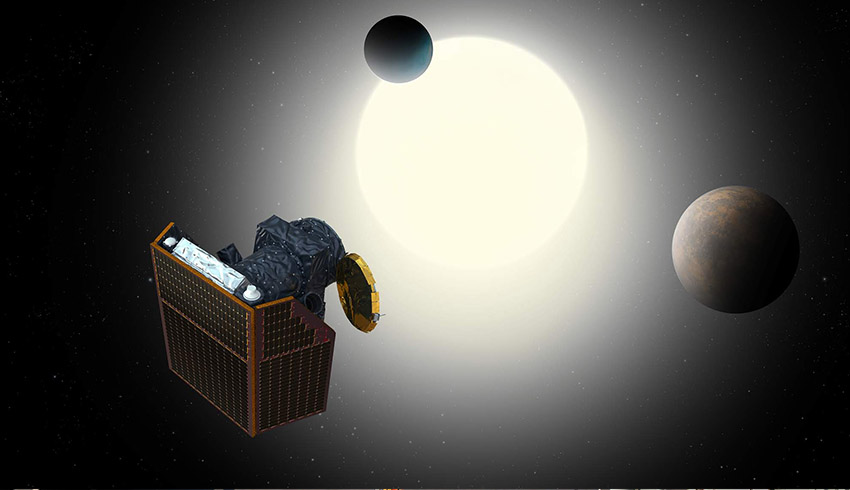Cheops will lift off as a secondary passenger on a Soyuz-Fregat rocket launching from Europe’s spaceport in Kourou, French Guiana. The satellite will be stored at the Airbus Defence and Space facility in Madrid for a few months before being shipped to the launch site, targeting the launch time slot between 15 October and 14 November in 2019.
Günther Hasinger, ESA director of science, said, "We are thrilled to be launching Cheops later this year. With its ultra-high precision observations of stars that we already know to host exoplanets, the mission will enable a first-step characterisation of the composition and nature of planets beyond our solar system."
Cheops is a follow-up mission: it will make observations of bright, exoplanet-hosting stars to measure small changes in their brightness due to the transit of a planet across the star's disc, targeting in particular stars hosting planets in the Earth-to-Neptune size range.
Knowing when and where to point in the sky in order to catch these transits makes Cheops extremely efficient, maximising the time it spends monitoring actual transit events.
"It has taken over five years of work to get to this point, and we are within budget and fully on schedule, so we are extremely satisfied to see the satellite finally ready for flight," Nicola Rando, ESA Cheops project manager said.
The transit observations will yield precise measurements of a planet’s size. Combined with known information about the mass of the planet, this data will make it possible to determine its density, providing vital clues about its composition and structure, indicating for example if it is predominantly rocky or gassy, or perhaps harbours significant oceans.
Hasinger said, "Cheops is ESA’s first satellite dedicated to exoplanets, paving the way to two more missions in the coming decade and consolidating European leadership in exoplanet science."
Following in the steps of Cheops, ESA’s PLATO, the Planetary Transits and Oscillations of stars mission, and ARIEL, the Atmospheric Remote-sensing Infrared Exoplanet Large-survey mission, will be launched in the late 2020s to discover and further investigate new worlds around other stars.
Cheops is an ESA mission implemented in partnership with Switzerland, with important contributions from Austria, Belgium, France, Germany, Hungary, Italy, Portugal, Spain, Sweden and the UK.

